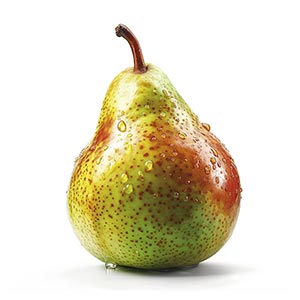Pear, scientifically known as Pyrus, is a popular fruit that has made its presence felt in the world of fragrances. Its sweet and juicy aroma has been a source of inspiration for perfumers for centuries. In perfumery, Pear is cherished for its ability to add a fruity and refreshing note to fragrances. The extraction process typically involves capturing the aromatic essence of ripe pears, which is then incorporated into fragrance compositions. The result is a scent that evokes the crispness and juiciness of this beloved fruit. Pears have a long history of use in perfumes, dating back to ancient civilizations where their aroma was considered a symbol of freshness and vitality. Today, Pear continues to be a favorite choice for creating fragrances that offer a sense of natural sweetness and vibrancy. Pear is commonly associated with the Fruity fragrance family due to its distinct fruity scent. It is a versatile ingredient that can be used to create a wide range of perfumes, from light and refreshing scents to more complex and layered fragrances Despite its many advantages, pear is not an easily used raw material in perfumery. Most fruity notes are challenging to extract, and it is impossible to obtain natural pear essential oil. Instead, its scent is reproduced in laboratories using a group of molecules called esters or acetates.
Natural or Synthetic?
Pear essential oil is not commercially available due to the difficulty in extracting it from the pear fruit. The fruit's flesh is very delicate and has a low oil content, necessitating the synthetic replication of its scent. Synthetic versions are created using aroma chemicals like esters and lactones, which provide a fresh, sweet, and juicy pear-like aroma. This synthetic approach ensures consistent quality and supply, offering a practical and cost-effective alternative to natural extraction.
Fragrance Families Pear Most Commonly Found In
Show fragrances that contain Pear as a note



